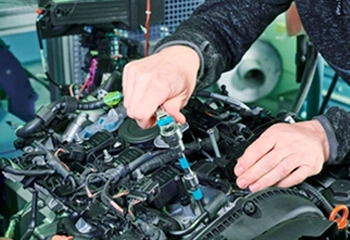 The perfect match for petrol engines
The perfect match for petrol engines
Niterra (formerly Niterra) has been developing spark plug technology since the 1930s and manufacture plugs for every type of automotive engine, as well as for motorcycles, marine, horticultural, plant and many other applications. In fact NGK produces and stocks over 1,000 different types of spark plug and every product matches even the most demanding manufacturers’ specifications. The vast experience and technology that NGK has ensures that there is no doubt that NGK are the world’s No.1 spark plug.

World's No.1 Original Equipment supplier to automotive manufacturers

> 1,500 part numbers available for European markets

93% coverage of vehicles in operation in Europe (source: TecDoc)

Extensive range for power sports and power tools

Spark Plug Requirements
As the main source of power in any petrol engine, a spark plug performs an essential function: It is responsible for igniting the air-fuel mixture in the combustion chamber of petrol engines. This combustion process creates power, ultimately setting the vehicle in motion. To make sure the combustion process runs smoothly, the spark delivered by the spark plug must ignite just before the piston reaches its highest point and the compression is at its greatest.
 Types of Spark Plugs
Types of Spark Plugs
 Resources
Resources
Niterras Catalogue
 3:18
3:18
IGNITING PASSION: When Performance Meets Precision






